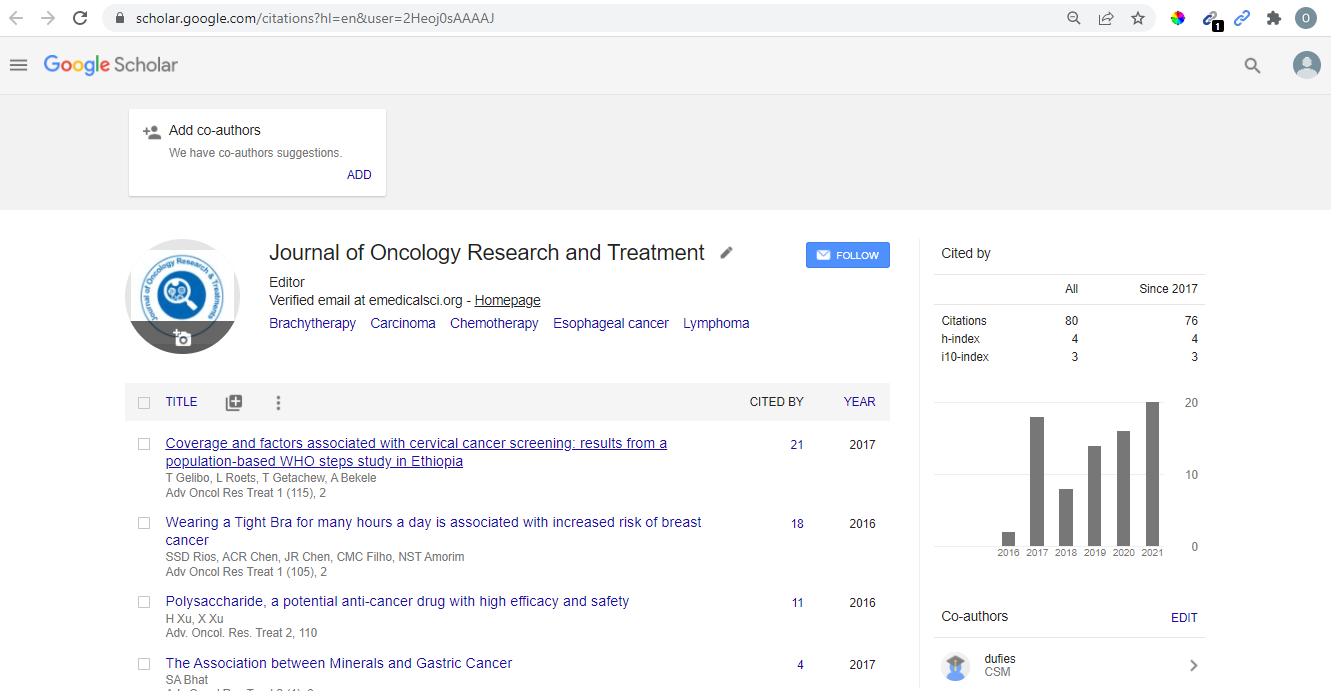Extra Medullary Solitary Plasmacytoma of the Oropharynx: A Case Report
*Corresponding Author:Received Date: Mar 11, 2023 / Published Date: Apr 17, 2023
Citation: Priya S, Grover R K, Garg P, Poonam S, Goyal N, et al. (2023) Extra Medullary Solitary Plasmacytoma of the Oropharynx: A Case Report. J Oncol Res Treat 8: 203.
Copyright: 漏 2023 Priya S, et al. This is an open-access article distributed under the terms of the Creative Commons Attribution License, which permits unrestricted use, distribution, and reproduction in any medium, provided the original author and source are credited.
Abstract
Background: Extramedullary plasmacytomas (EMP) are uncommon malignant neoplasms that can occur in any organ. They arise most frequently from the upper aerodigestive tract. It is necessary to exclude metastasis from multiple myeloma to diagnose a solitary extramedullary plasmacytoma. The pathophysiology of plasma cell neoplasms is related to the monoclonal plasma cell proliferation. Radiotherapy and surgery are the main treatments for EMP in the head and neck. The high risk of evolution toward myeloma encouraged new strategies for Solitary Plasmacytomas (SPs). Materials and methods: Here we present a case study of a 60 year old male presented in our OPD with chief complaint of difficulty and pain while swallowing. On examination, we found a cystic swelling in left vallecula which was referred for excision. Histopathology was plasma cell neoplasm and immunohistochemistry consistent with the same. There were no lytic lesions and M band was absent. So, a diagnosis of extramedullary solitary plasmacytoma of oropharynx subsite vallecula was made. The post excision scans showed mild thickening of left vallecula and patient was started on bortezomib and lenalidomide based chemotherapy. The patient achieved complete response after 6 months of chemotherapy with minimal hematological and gastrointestinal toxicity. Results: Most common sites of solitary extramedullary plasmacytoma of the head and neck include sinonasal area and nasopharynx. Here we reported a rare site of head and neck Solitary Extramedullary Plasmacytoma (SEP) i.e. vallecula (oropharynx). As the high risk of Myeloma is increasing in head and neck SEPs, new strategies have included bortezomib and lenalidomide in treatment of extramedullary plasmacytoma. Our patient achieved complete local response after excision and 6 months of chemotherapy. Conclusion: As risks of Myeloma increase in solitary extramedullary plasmacytoma, Further similar studies will establish role of bortezomib and lenalidomide in extramedullary plasmacytoma. Currently surgery and radiotherapy form the mainstay of treatment.

